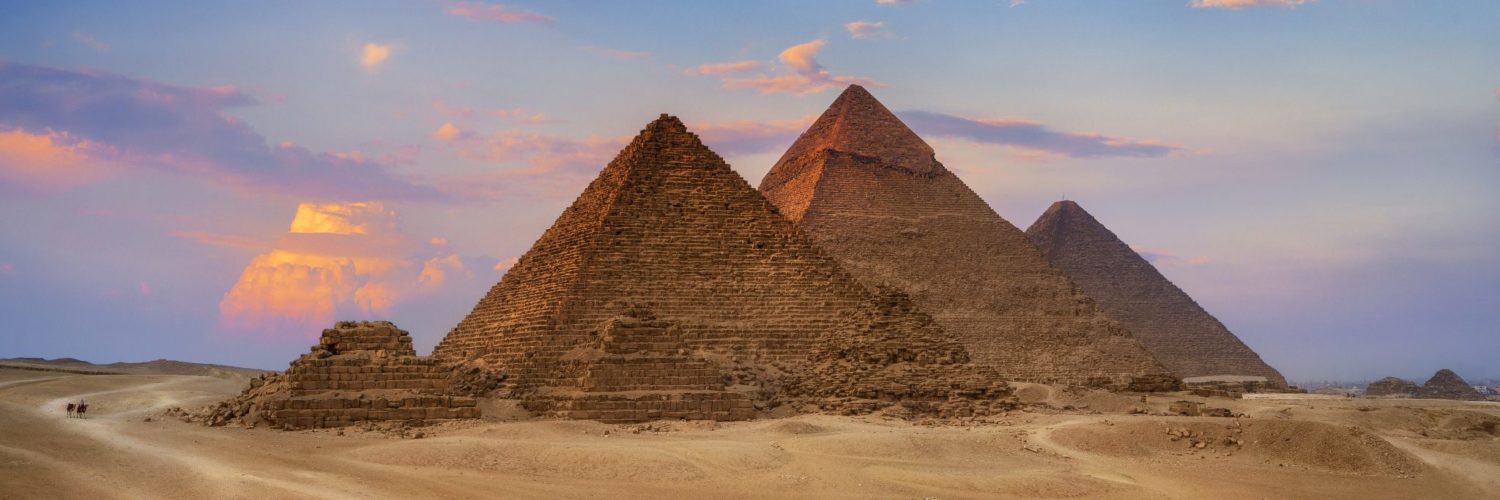Pyramids continue to stand as iconic heroes of power, mystery and architecture in the world for years. These structures are often truly astonishing in size, which is why those who visit them wonder how big the pyramids could be. When you think of the pyramids, Egypt comes to mind. The flamboyant Pyramids of Giza have become a worldwide phenomenon and are known to all. However, pyramid structures were also built by different civilizations at the same time as the Egyptians and far away from them. Although they had no communication with each other, these triangular structures were extremely important for the people of the same period.
Contents
- 1 Pyramid of Zoser / Saqqara – Egypt / 2660 BC
- 2 Pyramid of the Sun / Teotihuacan – Mexico / 100 AD
- 3 El Castillo / Yucatan – Mexico / 1000 AD
- 4 Prang Temple / Koh Ker – Cambodia / 940 AD
- 5 Pyramid of Cheops / Cairo – Egypt / 2560 BC
- 6 General’s Tomb / Ji’an – China / 400 AD
- 7 Ziggurat of Ur / Iraq / 2000 BC
- 8 Kashta Tomb / Meroe – Sudan / 500 BC
- 9 Borobudur Temple / Java – Indonesia / 800 AD
- 10 Tikal / Peten – Guatemala / 200 AD
- 11 Bent Pyramid / Dahshur – Egypt / 2600 BC
- 12 Pyramid of Cestius / Rome – Italy / 12 BC
How the giant pyramids, which are considered the highest point of construction and engineering, were built, is still not fully resolved today. How were the giant stones used while narrowing from the floor to the ceiling and reaching a height of meters? The oldest pyramid in the world is the 4700 year old Djozer in Egypt. The largest is Cholula in Mexico. Many ancient pyramids, especially in Peru, Sudan, Mexico, Italy and Iraq, are waiting for their mysteries to be solved. We have compiled 12 largest pyramids in the world for you.
In order to visit all these pyramids and reach them easily, you can rent a car within minutes by checking out Yolcu360 international car rental options.
Pyramid of Zoser / Saqqara – Egypt / 2660 BC

Built a century before the Pyramids of Giza, the Pyramid of Zoser is the oldest of hundreds of pyramids in Egypt. When it was built by the Pharaoh Zoser, the tops of the pharaoh tombs were flat until then. Zoser, built by placing mounds on top of each other, is the work of architect Imhotep. Little is known about the reign of Zoser, the first king of the Third dynasty in Egypt. A labyrinth of tunnels was built inside the pyramid to deal with grave robbers at that time, and many empty chambers were built outside the burial chamber.
Pyramid of the Sun / Teotihuacan – Mexico / 100 AD

Built in five layers and 65 meters tall, the Pyramid of the Sun is the largest and most magnificent of the pyramids in Teotihuacan. It was connected to the Pyramid of the Moon next to it by the Avenue of the Dead. It was carved from the red large volcanic rocks in the area. There are 248 rugged steps on the west wing of the pyramid. In the early 1970s, huge cave and tunnel systems were unearthed under the pyramid, and it was understood that these tunnels were found all over the city. There is much information about who built the Pyramid of the Sun and the purpose of its construction is a matter of speculation. Some archaeologists think that there may have been a temple on top of the pyramid in its early days.
El Castillo / Yucatan – Mexico / 1000 AD

One of the most magnificent remnants of the Mayan civilization is the ChichenItza Pyramid, also known as the Temple of Kukulcan or better known as El Castillo. This pyramid has quite remarkable astronomical connections. There are 91 digits on each face and 365 steps in the entire pyramid, representing the days of a year. Its most fascinating feature is that during the spring and autumn equinoxes, light and shadow form a series of triangles near the northern staircase, the shadows taking the form of a moving snake. ChichenItza is in great danger, geologists have found a 20-meter deep sinkhole under the pyramid, and the structure is at risk of collapsing into this sinkhole.
Prang Temple / Koh Ker – Cambodia / 940 AD

Koh Ker, the ancient capital of Cambodia, is a magical place with around 100 temples. Among these structures built during the Jayavarman period, a 35-meter-high 7-tiered pyramid rises. Many monuments and statues on Koh Ker were either looted or taken to museums by the governments. Koh Ker, which no one has been able to enter for years due to the mines around it, has only recently been cleared and opened to the public.
Pyramid of Cheops / Cairo – Egypt / 2560 BC

Giza Pyramids, one of the largest and most magnificent works of the ancient world, consists of 3 different pyramids. Khafre, Mikerinos and Cheops, aka Khufu or the Great Pyramid. Cheops was built for the pharaoh Khufu and remained one of the largest man-made structures for thousands of years. It weighs more than 50 tons and consists of an estimated 2 million 300 thousand blocks. It was made from rough hewn stones brought from the local quarry. The chambers and labyrinthine tunnels inside are more interesting than outside the pyramid. There is even an unfinished room, which is still unknown for what it is.
General’s Tomb / Ji’an – China / 400 AD

Goguryeo was one of the Three Kingdoms of Korea stretching from Mongolia to Chungju, and King Jangsu, the 20th ruler of Goguryeo, was buried in the 43-meter “Eastern Pyramid“. At least it is speculated that this tomb may have belonged to King Jangsu or his father, Gwanggaeto. It was made using 1100 pieces of chipped stone and bears the traces of typical Goguryeo culture. The general’s tomb is located in the city of Ji’an in modern-day China, which was the capital of Goguryeo.
Ziggurat of Ur / Iraq / 2000 BC

The Ziggurat of Ur is one of the best preserved Sumerian monuments. The pyramid in the ancient city of Ur in what is today Iraq was built by King Shulgi in the 21st century BC. King II in the 6th century BC. It was rebuilt by Nebuchadnezzar. It was built for the agricultural products of the people were stored here. At the top of the ziggurat, the Temple of Nanna no longer exists today. Blue glazed bricks are thought to have been used in construction.
Kashta Tomb / Meroe – Sudan / 500 BC

Sudan was ruled by Egyptian pharaohs under the name Nubia in ancient times. Nubian kings, greatly influenced by the Egyptians, built smaller and narrower pyramids. There are about 40 pyramids today, called Nubian Pyramids, almost twice as many in Egypt. These pyramids at Meroe continued to carry on the tradition 1,000 years after Nubian royal tombs and Egyptian burial methods changed.
Borobudur Temple / Java – Indonesia / 800 AD

Borobudur Temple, consisting of 9 floors, is not considered a traditional pyramid, but it is the largest Buddhist temple. Traditional Javanese when it was built in the 9th century by the Sailendra Dynasty It was designed as a combination of Buddhist architecture and Indian Gupta art. 100 years after the building was completed It was abandoned for some unknown reason and in 1814 England’s governor of Java, Lieutenant Thomas Discovered by Stamford. One of the features that makes the temple special is that it revolves around the cosmic axis, consisting of a series of radiating open air passages. The pyramid was circumambulated clockwise up to its top floor. Enlightenment in geometry and theology of Borobudur, where 504 Buddha statues are found. It is considered to be a work of art.
Tikal / Peten – Guatemala / 200 AD

Tikal, one of the important cities of the Mayan civilization, has a temple area consisting of 6 pyramids. The largest of the pyramids is 70 meters high and there is the Temple of the Two-Headed Serpent IV. After the Mayans, many remnants of civilization were buried in the rainforest. It was discovered by European explorers in 1850. Artistic peak was reached in Tikal, which is on the UNESCO World Heritage List today, between 600 and 800 AD. The temples and pyramids in an area of 576 square kilometers also represent the highest level of civilization.
Bent Pyramid / Dahshur – Egypt / 2600 BC

Built by Egypt’s Old Kingdom pharaoh Sneferu, the Bent Pyramid is unique and one of the most interesting pyramids in the world. Its lower part slopes 54 degrees from the desert and the upper part is at a narrower 43 degree angle. This results in a warped image. Another feature of the Bent Pyramid is that it is a transition to the stepped pyramids before it and the straight-sided pyramids after it. It is the only pyramid whose original polished limestone exterior has been preserved.
Pyramid of Cestius / Rome – Italy / 12 BC

After the Roman Empire annexed Egypt, an important curiosity about the traditions and civilization of the Egyptians arose. It is estimated that the pyramid built, which is the tomb of Caius Cestius, one of the wealthy judges of the period, was also built with this Egyptian influence. This unique Roman pyramid, 35 meters high, was made of white marble and brick. It contains scenes and frescoes from Roman mythology, just as the Egyptians did. In addition, an inscription explains why and how the pyramid was built.










Add comment